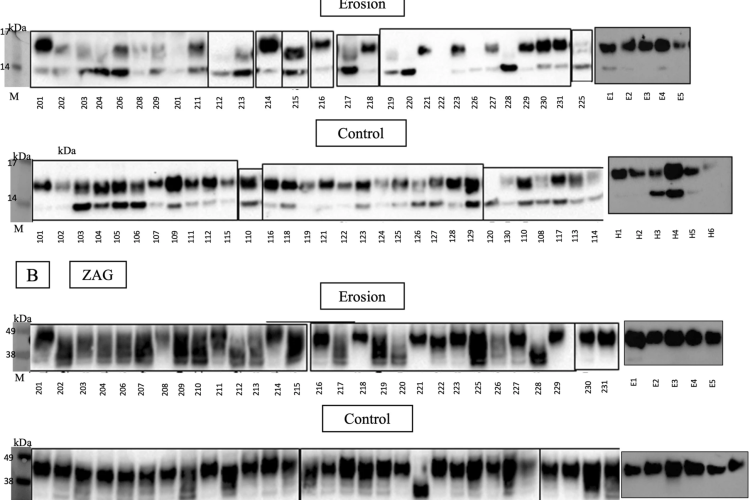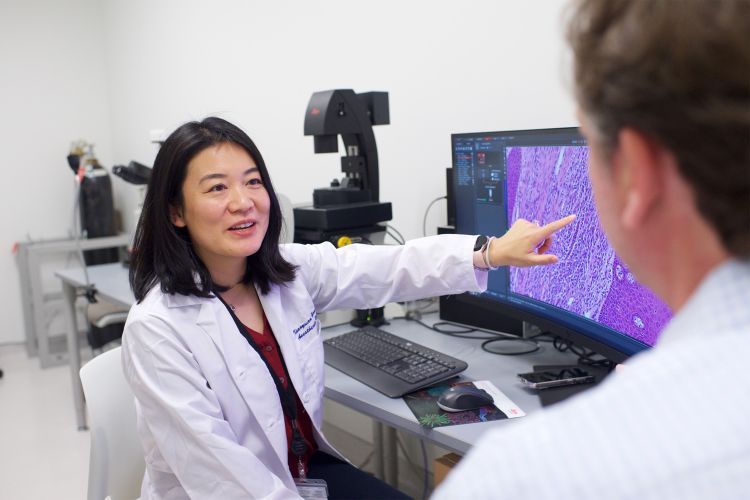Breadcrumb
Novel bacterial proteolytic and metabolic activity associated with dental erosion-induced oral dysbiosis

Caption: Immunoblots for PIP and ZAG proteins identified in saliva samples (E = erosion, H = healthy controls, M = protein marker)
What is it?
A look at whether there are differences between bacterial activity in healthy mouths and in those with dental decay.
What problem does it aim to solve?
Dental caries is a significant health issue and this work attempted to look at the factors that can create conditions favorable to caries-causing bacteria.
How does it work?
The goal of this study was to assess “whether the metabolomics of individuals with dental erosion was different from healthy individuals. Since oral bacteria can degrade salivary proteins by protease and peptidase activity, and produce organic acids from amino acid fermentation, their role in dental erosion was investigated using a multi-omics approach.” The study included the analysis of proteins found in saliva using mass spectrometry, genetic sequencing of oral bacteria, and analysis of salivary metabolites using nuclear magnetic research spectrometry.
What are the real-world implications?
Two particular proteins — prolactin inducible protein (PIP) and zinc-alpha-2-glycoprotein (ZAG) — were associated with dental erosion, and dental erosion was also associated with lower bacterial diversity. The genetic sequencing data showed that there were increased numbers of acid-tolerant bacteria among those in the dental erosion group, and that these bacteria were more active in this group.
What are the next steps?
There are many areas that warrant future research. Further studies should include a larger number of participants; include information on dietary habits; and focus on the possible mechanism behind the association between increased salivary proteolytic (protein breakdown) activity and dental caries.
Source
“Novel bacterial proteolytic and metabolic activity associated with dental erosion-induced oral dysbiosis“, Microbiome volume 11, Article number: 69 (2023)
Authors
Leanne M. Cleaver, Centre for Host Microbiome Interactions, Faculty of Dentistry, Oral and Craniofacial Sciences, King’s College London
Miguel Carda-Diéguez, Department of Health & Genomics, Foundation for the Promotion of Health and Biomedical Research (FISABIO) Foundation, Valencia, Spain
Rebeca Moazzez, Department of Preventive and Restorative Dentistry, Arthur A. Dugoni School of Dentistry
Guy H. Carpenter, Centre for Host Microbiome Interactions, Faculty of Dentistry, Oral and Craniofacial Sciences, King’s College London





